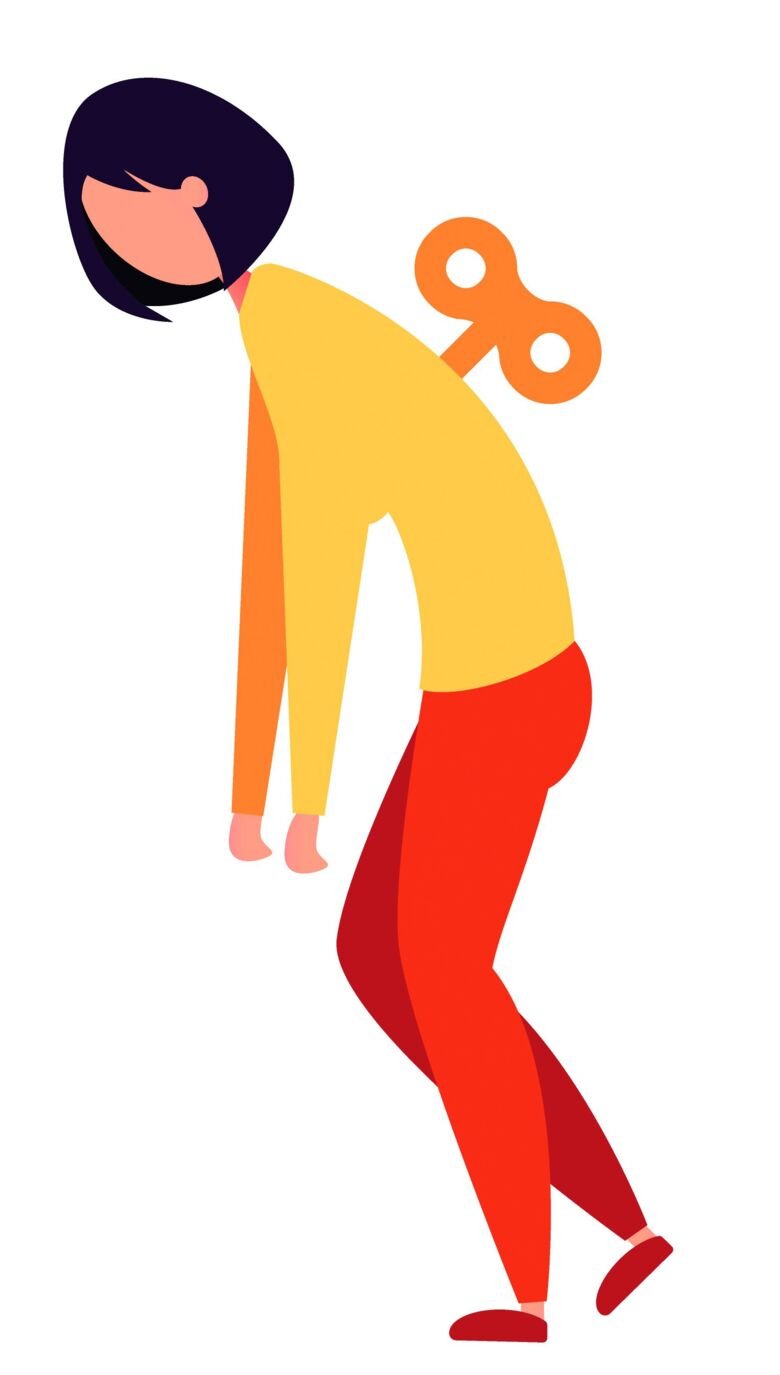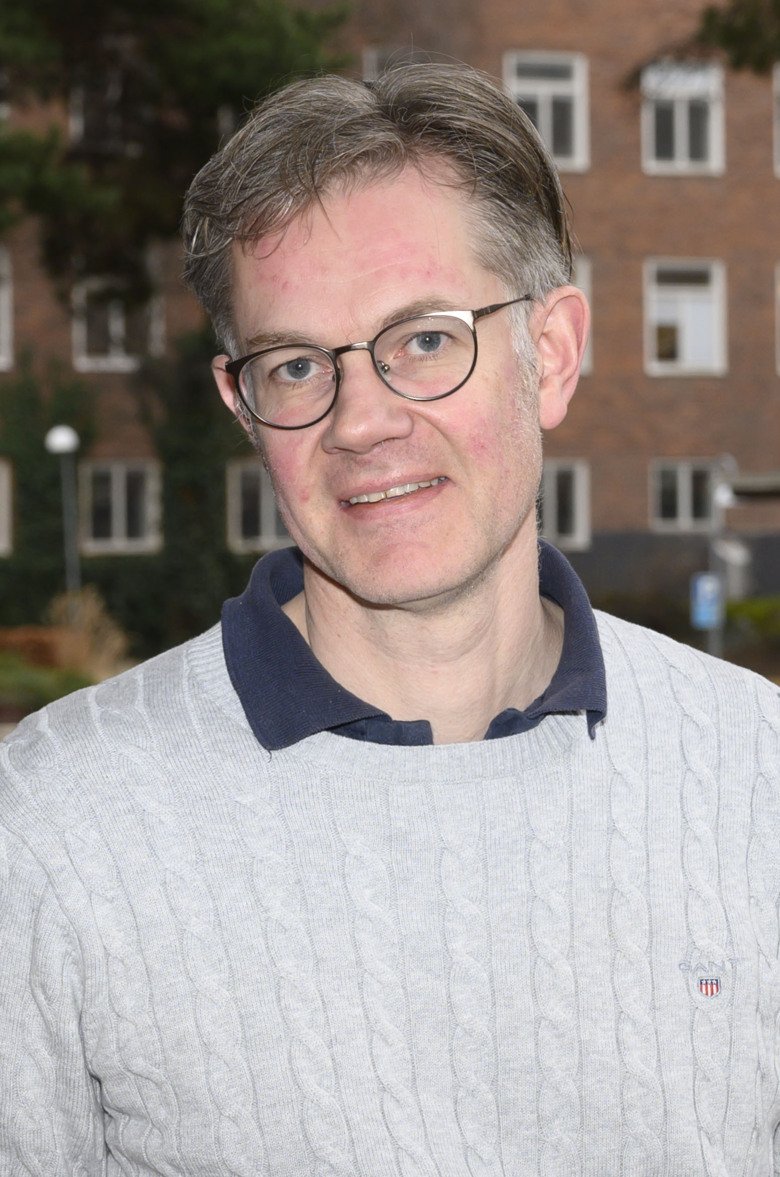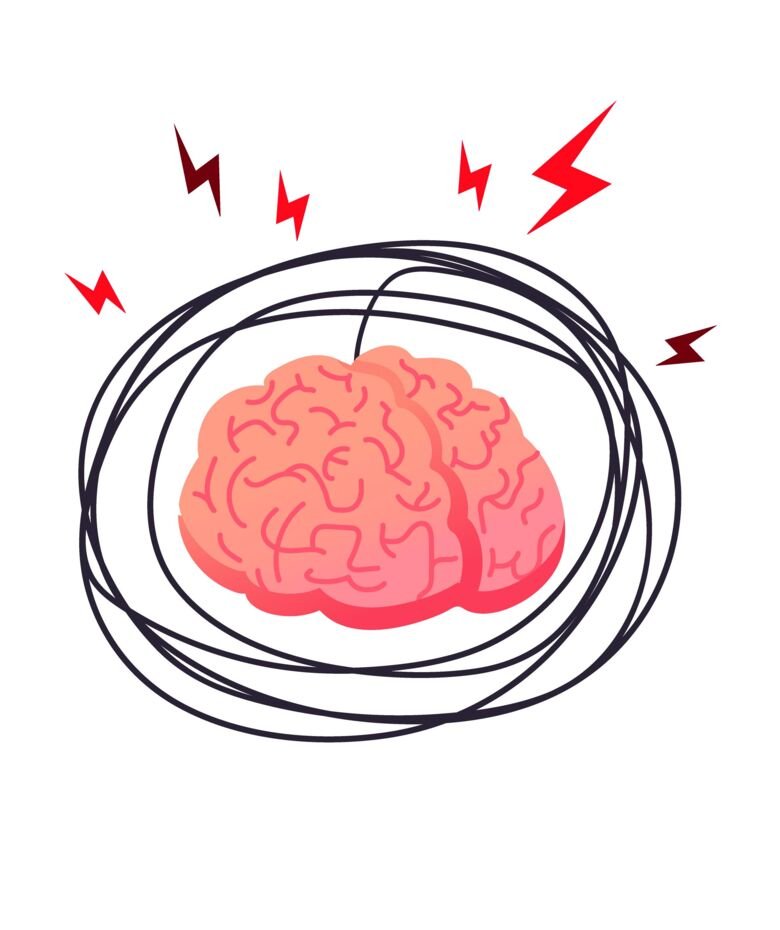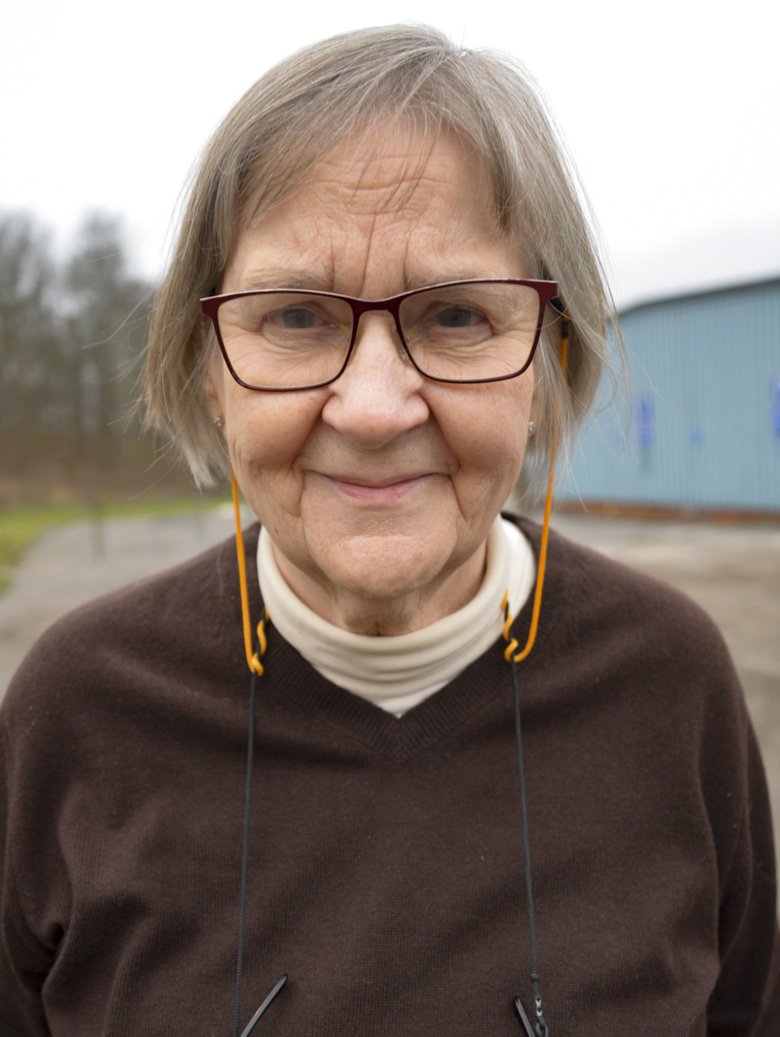Dead tired – curious about tiredness
Tiredness can be completely normal or a symptom that turns life into an ordeal. We have talked to researchers at Karolinska Institutet who want to know what happens when our energy runs out.
Text: Annika Lund, first published in Swedish in the magazine Medicinsk Vetenskap no 1/2020

We have all felt tired. We feel it everyday before bed. But tiredness is something beyond sleepiness. We may, for example, experience a general listlessness after a severe cold – we have less energy, even though we slept well.
But as a symptom, tiredness is tricky. Wheres pain is more or less always a signal that something is wrong, tiredness is completely normal. This can lead to an acceptance of a tiredness that is actually morbid.
It is also unclear what happens inside of us when we get tired and then perk back up. The mechanisms in charge of mental fatigue and recovery are largely unknown. And there is no certain knowledge on whether it is these mechanisms, whichever they may be, that have malfunctioned when we experience pathological fatigue, or if something else has happened. Additionally, there is no tiredness centre in the brain or a substance that may explain how tiredness arises, the way there is a sleep centre and certain hormones with clear connection to sleep.
Linguistically fuzzy
The concept of tiredness is also linguistically fuzzy. It can describe both a pleasant sensation in the body experienced after exercise or an unpleasant feeling of being able to process any more information. It can also be used when someone is sleepy or even bored. The word used to describe severe tiredness, mental or physical, that cannot be rested away is fatigue.
This extreme tiredness occurs in many conditions. For an example, it is common in cases of diabetes, depression, allergies, and thyroid disease. It is also common in cancer and in several autoimmune and inflammatory diseases, such as rheumatic diseases, psoriasis, and MS. Great tiredness and exhaustibility also occurs after traumatic brain injuries after accidents and falls.
According to Julie Lasselin, a researcher within the field of psychoneuroimmunology at Karolinska Institutet and the University of Stockholm, tiredness is a feeling. It can be graded according to self-estimated scales and extreme tiredness can be hard to live with.
She studies Illness Behaviour: how we behave and feel when we are ill. She is trying to understand how this is affected by inflammation.

“It is easy to understand why we get tired when we are sick. It is to do with the brain telling the body to reprioritise so that we use our energy to heal and get well. But we react differently to an infection. Some are completely knocked out, others can go on relatively unaffected. I am trying to understand why we react so differently when we get sick, and within that I am focusing especially on tiredness,” says Julie Lasselin.
She has for example analysed the experience of almost 120 healthy subjects who where injected with either LPS, a substance found in the membrane of certain bacteria, or a placebo. An LPS injection tricks the immune system into believing a bacterial invasion is taking place, but really the subject has not been injected with an infectious agent.
In this study, regular blood samples where obtained to monitor the levels of two cytokines, TNF-alpha and IL-6. These are substances in the immune system that have previously been associated with tiredness Simultaneously, the subjects were self-estimating their level of tiredness.
The study showed that the cytokine levels closely followed the level of self-estimated tiredness. Julie Lasselin and her colleagues call this physiological tiredness. It is a tiredness that can be rested away and that is an expected effect of a working immune system.
In other studies, healthy persons have been alternately injected with LPS or a placebo to define how behaviour is affected during an ongoing inflammation. And subjects would act differently with engaged immune systems. Then they where more motivated to make an effort to receive a reward compared to when they had been injected with a placebo.
Julie Lasselin and her colleagues have suggested that inflammation, even when it is so miniscule that it cannot be measured in a standard blood test, affects the brain. Especially if the inflammation period is lengthy. This could contribute to a changed behaviour in people with low-grade chronic inflammation. The researchers suggest that this change in behaviour may be a component towards pathological fatigue, the morbid tiredness that is no longer curable with sleep.
“It seems that the assessment of how great an effort a person is prepared to make is affected in people with inflammation. A person with low-grade chronic inflammation may be overexerting themselves in relation to their energy levels, which may lead to pathological fatigue,” according to Julie Lasselin
Describe having fatigue
Nine out of ten people with the neurological disease MS describe having fatigue. For a lot of patients it is the most disabling symptom. About the same number of those diagnosed with a rheumatic disease, where not only joints but organs are affected by autoimmune attacks, report feeling fatigued. Amongst those who have a rheumatic joint disease where inflammation is local in one or multiple joints, about half experience fatigue.
A central part of treatment of these diseases is to lower the levels of inflammation. When this is achieved most experience some relief of their symptoms, for a example the fatigue.
But not all. Within rheumatology it is above all the patients with systemic diseases who have lingering symptoms despite low inflammation levels. This according to the rheumatologist Jon Lampa, associate professor at the Centre for Molecular Medicine. He studies pain and fatigue in patients with well treated inflammation. According to him, the levels of tiredness correlate poorly with inflammation levels in rheumatic disease. Rather, the levels of tiredness follow the pain levels.
According to Jon Lampa this has multiple possible explanations. One is that it is simply exerting to manage pain, which leads to more depleted energy levels. Another is that synapses and neurotransmitters in the brain are affected by long-term, chronic pain. This leads to a reaction which is tiredness.

“It is also possible that inflammation in the body, measured through inflammation markers in blood samples, do not reflect how the brain is affected. The methods of measurement when it comes to inflammatory activity in the central nervous system are quite blunt. Perhaps there is an inflammation in the brains of those patients, but we lack the tools to measure them,” says Jon Lampa.
He and his colleagues are conducting studies scanning the brains of patients with rheumatoid arthritis. In one of these studies patients were asked to describe their symptoms of fatigue and pain in association with an initial fMRI scan. Since, patients have either received treatment for their disease or a placebo. After a time they where asked to self-estimate their fatigue and pain again, and a new fMRI scan was done.
Multiple results about pain have already been published. They showed intense information exchanges between the brain’s pain centre and the centres connected to muscle and bones in patients reporting pain. Additionally, patients seem to process pain impulses differently than healthy people. These studies are still ongoing concerning fatigue.
Iron or B12 deficiency
But fatigue may occur without inflammation. For example, it is well known that we get very tired when we have an iron or B12 deficiency, or if our heart’s pumping capacity is impaired. We can also become tired due to disturbances in our hormone levels, such as our insulin or cortisol levels, or simply from a lack of sleep.
We can also become very tired due to stress.

Many Swedes are. Almost half of all sick leave is caused by mental ill-health, according to the Swedish Social Insurance Agency. About half of the reported leaves are due to stress-related illness. The largest diagnosis in the field is exhaustion disorder, which is characterised by extreme fatigue. Effects on cognition like memory and concentration difficulties are a part of the symptoms, as is sensitivity to stress. The background is often prolonged exposure to stress, with a lot of pressure privately or at work, in combination with a lack of recovery time.
The eponym was given in the early 2000s by Marie Åsberg, Professor Emerita in Psychiatry at Karolinska Institutet’s Department of Clinical Sciences, Danderyd Hospital. She describes the process that starts during stress: first, the autonomic nervous system starts up by increasing the heart rate and blood pressure to ensure blood to the muscles. The adrenal cortex secretes cortisol and other stress hormones, which makes us more alert. The metabolism and immune system recalibrate. Everything is rigged for our speedy escape, or if worst comes to worst, to heal our wounds in case we need to fight.
Will impact the body and the brain
But this system is meant to work in response to short, explosive action where everything then returns to normal. Having this stress system activated long-term will impact the body and the brain. Studies of rats under severe pressure have shown that the amygdala swells while the hippocampus and frontal lobes shrink, which resounds well with the symptoms the disease gives. The same changes have been observed in the brain scans of people with exhaustion disorder.

“Exhaustion disorder is a brain disease, no doubt about it. Patients often find this difficult to accept. But that is why it takes so long to heal from the disease. Healing brain diseases is a slow processes,” says Marie Åsberg.
She wrote the first guidelines for the National Board of Health in the field. They were issued in 2003 but the range of treatments is still sparse.
“Above all else, patents need time. The long healing period is often provocative to the patient,” Marie Åsberg states.
Some symptoms, like depressive moods or disrupted sleep have effective medical or psychological treatments. Physical activity and fitness are valuable tools. But the most significant part of the work will be to achieve real lifestyle changes. The patient’s workload needs to be normalised and the patient needs to find a balance between activities that provide recovery and activities that take energy. Then this should be alternated in order to ensure that energy levels are not completely depleted before they need refilling. It can mean learning to vary between strenuous mental work and a recovering walk.
The prognosis for the group is relatively good. Most come back to work and the risk of relapse is smaller than for many other psychiatric ailments, according to the Swedish Social Insurance Agency.
But exhaustion disorder takes time to establish. Marie Åsberg believes that the self-assessment scale she helped set up could have an important function in this respect. It is called KEDS, Karolinska Exhaustion Disorder Scale, and is available for free online. The form only takes a couple of minutes to answer and the results show there are risks for exhaustion disorder.
Make the necessary adjustments
“This kind of assessment could catch those who are on their way towards the illness before it is established. If you make the necessary adjustments, you will avoid getting ill. These tests could function similarly to liver value checks for an alcoholic, to push people into understanding that things have gotten serious. Then maybe the changes will actually happen. Generally speaking a lot of people are afraid of exhaustion disorder,” says Marie Åsberg.

ME/CFS, formerly known as chronic fatigue syndrome, is a disease that in several ways is reminiscent of exhaustion disorder. This leads to some diagnostic uncertainty, according to Per Julin, chief physician at the neurological rehabilitation clinic Stora Sköndal and researcher at the Department of Neurobiology, Care Sciences and Society.
“There have been several sets of diagnostic criteria for ME/CFS and some of those who have been diagnosed with the older varieties, where exhaustion was the main criteria, may in fact have been suffering from stress-induced exhaustion disorder. This creates an uncertainty regarding the old studies, where it is unclear what diagnosis the included patients actually had. But the research is getting better and safer as the right people are now included in the studies,” says Per Julin.
There are several clear differences between the disorders. For example, the onset of ME/CFS often occurs after an acute infection, such as glandular fever, Lyme disease, or flu.
People with ME/CFS
Another difference is that people with ME/CFS experience a deterioration of symptoms during any kind of strenuous activity. Physical and mental activity can cause flu-like symptoms, some even contract fever. This symptom, called postexertional malaise (PEM), is central to the disease. Meaning, that all activity may feel exhausting, even that which the patient has previously experienced to provide recovery, such as pleasant company or a walk. Additionally, people with ME/CFS cannot use physical activity as part of their treatment the same way people with stress-induced exhaustion disorder may.
“Actually, the typical patient is quite easy to diagnose. What is sad is how often they are misunderstood,” says Per Julin
He is collaborating with researchers at Karolinska Institutet and in Uppsala, among others, trying to track the biological markers and treatments that are relevant to patients with ME/CFS. From a research perspective Per Julin is hopeful for the future.
“Current research is pointing strongly towards autoimmune mechanisms, an inflammation in the nervous system and effects on the cells’ ability to produce energy. In the last couple of years new drugs have been introduced in the areas of cancers and immunology, targeted towards specific mechanisms within the immune system. I think that if we get a little further within the research on biomarkers for ME/CFS we will be better equipped to identify the affected mechanisms, then the step to new drugs and treatments trials will be a short one,” states Per Julin.
How to reduce everyday tiredness
Do you feel tired or listless? Here are some things for you to try:
- Check if there is an easy explanation, like a lack of iron or a thyroid disease. This is done through a blood sample at a health centre.
- Address any issues with sleep. If you are not sleeping enough or have poor sleep quality there is help to be had, check with a health centre.
- Exercise. Physical activity is energising.
- Eat nutritiously and regularly
More about sleep and tiredness

John Axelsson's research group
Sleep, cognition and health – How are we affected by disturbed sleep and stress when it comes to for example cognitive abilities and health? How does the immune system affect our experiences? Does beauty sleep exist?

A sleep-deprived brain interprets impressions negatively
A sleepless night not only leaves us fatigued and distracted, it also makes us interpret things more negatively and makes us more likely to lose our temper.
